Sometimes the best flowers are the old-fashioned ones that Grandma used to grow, like peonies. These long-lived flowering perennials come in a stunning array of colors and are typically fairly low maintenance, making them a favorite among gardeners. But choose your garden spot wisely — once they are planted, peonies can happily reside in the same place for up to 15 years before needing to be divided and transplanted.
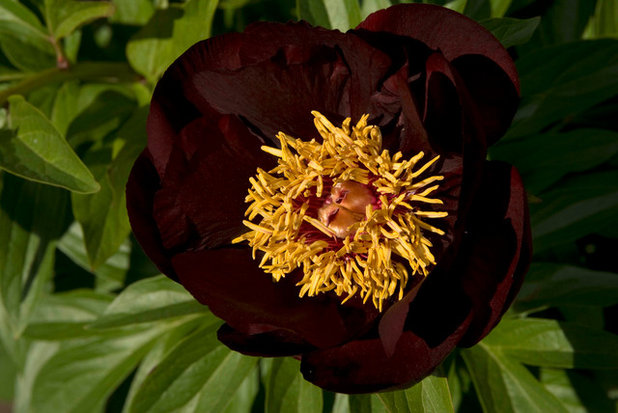
The New York Botanical Garden
Botanical name: Paeonia spp or
Paeonia suffruticosa Common names: Peonies, tree peonies, garden peonies
USDA zones: 2 to 8, but they generally grow and flower better in cooler climates
Water requirement: Average
Light requirement: Full to partial sun
Mature size: 2 to 4 feet tall for garden peonies; up to 10 feet tall for tree peonies
Benefits and tolerances: Showy and fragrant flowers that tolerate a wide range of soil types as long as the soil is well drained
Seasonal interest: Blooms in late spring to early summer
When to plant: Plant in early fall or spring when soil is warm.
Shown: Paeonia lactiflora 'Chocolate Soldier'
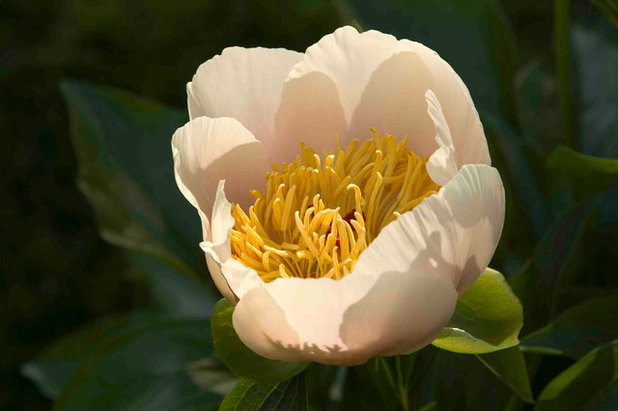
The New York Botanical Garden
Distinguishing traits. These old-fashioned flowers bloom in nearly every color except blue, are highly fragrant and are easy to grow. They typically need some winter chill to grow and bloom best, so peonies traditionally perform better in cooler zones and climates, rather than in Deep South gardens. There are early-, mid- and late-season bloomers, so if you plan carefully you can have six to eight weeks of peony blooms (even though each bloom typically only lasts a week).
Shown: Paeonia 'Golden Wings'
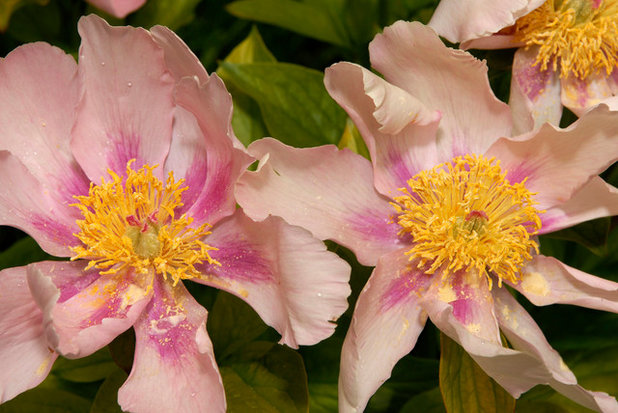
The New York Botanical Garden
Shown: Paeonia 'Golden Frolic'
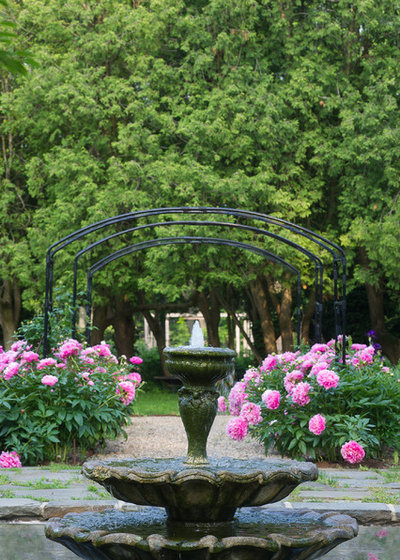
Susan Cohan, APLD
How to use them. Peonies are gorgeous additions to mixed perennial beds and borders, and make excellent cut flowers. Because of their old-fashioned appeal, they look best in traditional or cottage gardens and planted with other flowering perennials.
As their flowers fade, the foliage stays to add a welcome green fill in the summer garden. Look for varieties like 'Chocolate Soldier', 'Coral Sunset', 'Golden Frolic' and 'Fantastic'.
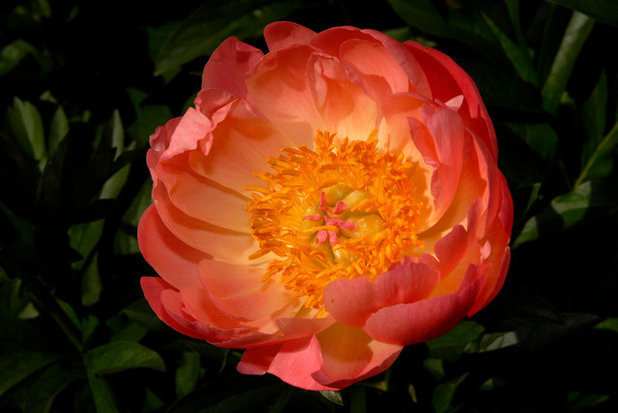
The New York Botanical Garden
What to look out for. Peonies have very few pest and disease problems, but on occasion will fall prey to fungal issues or scale. Remove foliage that is diseased or use an antifungal spray. For scale use insecticidal soaps or oils and encourage natural predators like wasps and ladybugs.
Use a low-nitrogen fertilizer in the spring when stems are about 2 inches tall, as too much nitrogen can produce weak stems and a decrease in blooms. Avoid cutting more than a third to half of the plant's flowers for cut-flower purposes, and leave as much foliage on the plant itself as possible to encourage more blooms.
Shown: Paeonia lactiflora 'Coral Sunset'
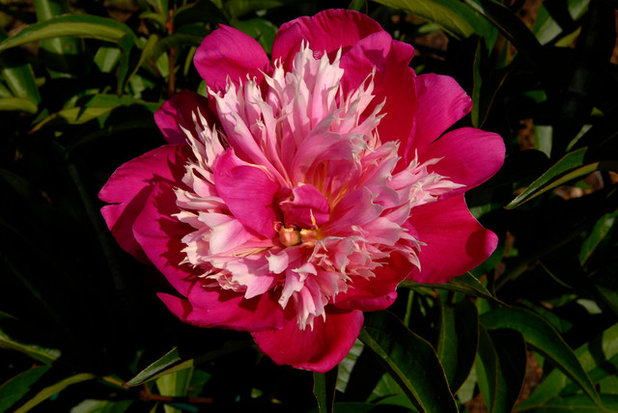
The New York Botanical Garden
Planting notes. Peony planting is best done in early fall, but it can also be done in spring once the soil is warmed up and workable.
- Dig a hole larger than the root ball.
- Add compost to the bottom of the hole.
- Plant the peony in the hole with the eyes (small reddish buds) 1 to 2 inches below the soil surface.
- Add soil, gently tamp down and water in.
You can leave peonies in the same spot for many years, but if you notice a decrease in flower production, it's probably time to dig them up and divide them. Gently tap the soil away from the roots and separate them, then plant the individual plants immediately. Each peony needs a diameter of about 3 feet for best plant health and growth.
Shown: Paeonia lactiflora 'Fantastic'
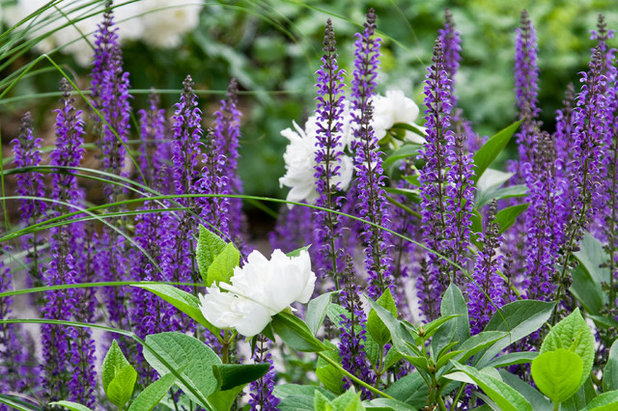
Matthew Cunningham Landscape Design LLC
Popular peony types:
Hybrid: Hybrids are a cross between two other peony species. They typically bloom earlier in the season and offer additional colors and foliage types, but often have only one bloom per stem. Hybrids die to the ground during winter but will return with new growth each spring. Look for 'Coral Charm' and 'Do Tell'.
Lactiflora: Native to China, lactiflora peonies are the most common peonies found in nurseries. Most produce side buds, which allow more than one bloom per stem. They also die to the ground during winter and return in the spring. Try 'Dark Purple Silk' and 'Brightly Colored Golden Star'.
Tree: These peonies lose their leaves in the fall, but their stems stay intact through the winter. They are typically slower to grow. Look for 'Big Deep Purple' or 'Black Dragon Brocade'.
Intersectional: Intersectional peonies are a cross between tree peonies and those that lose their leaves in the fall. They feature the same leaf formation as the tree peony but die back in the winter before returning in the spring. They command a higher price because they are newer introductions in the peony world. Good choices include 'Garden Treasure' and 'Cora Louise'.





